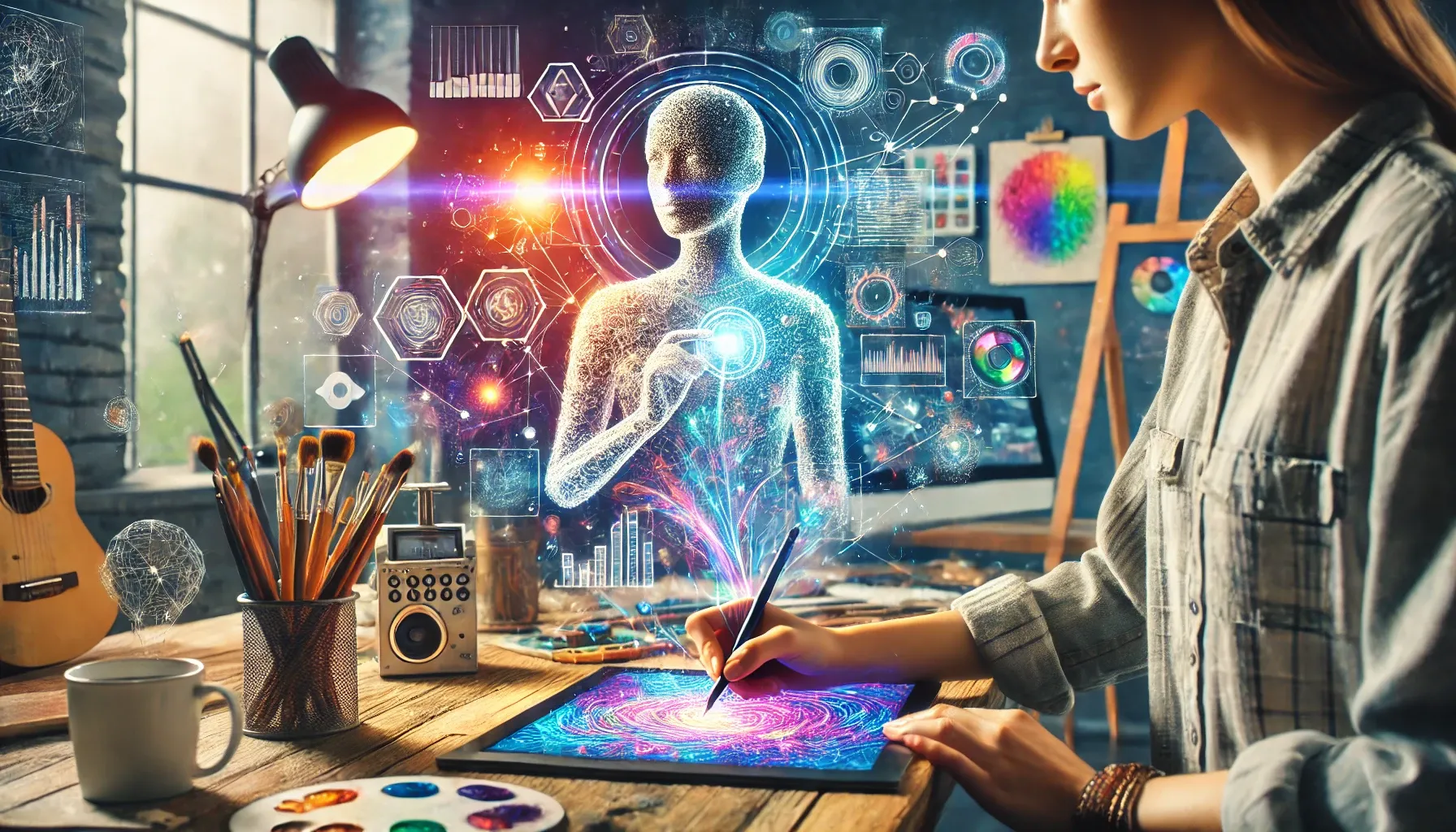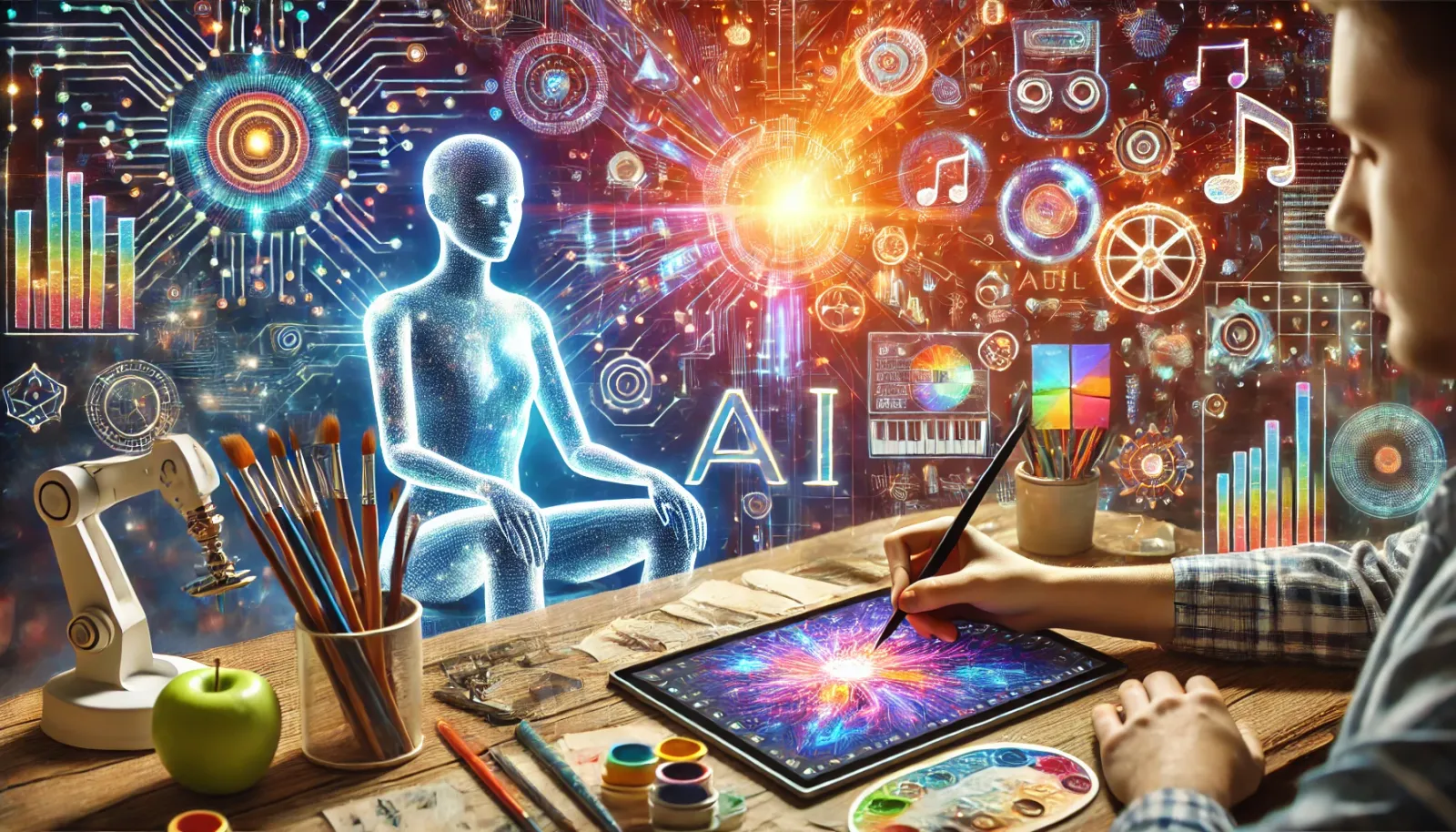AI is often seen as a cold, calculating technology, while human creativity is regarded as spontaneous and uniquely human. However, these perceptions are increasingly being challenged. This article explores the fascinating intersection of AI and human creativity, questioning conventional wisdom and uncovering potential synergies between the two. By using insights from recent research, we aim to shed light on how AI can enhance and collaborate with human creativity.
AI's Capabilities in Creativity
AI excels in processing and analyzing vast quantities of data, identifying patterns that may elude human perception. This capability allows AI to generate designs, content, and solutions informed by existing data insights, making it invaluable for tasks that require speed, consistency, and precision. AI's strength in rapid iteration facilitates experimental creativity, allowing human designers to explore a broader range of possibilities.
For example, neural networks designed for image generation can assist artists in visualizing concepts that might be challenging to realize manually. Similarly, AI-driven music composition tools can inspire musicians by offering novel chord progressions and melodies. These AI systems act as collaborators, expanding the horizons of what is artistically possible (Smith, 2023).
Human Creative Traits
Humans bring a depth of emotional intelligence to their creative endeavors, capable of infusing empathy, humor, and nuanced feelings into their works. This ability enhances the emotional resonance of creations and enables designs and narratives that connect deeply with audiences on a personal level. Human creativity is marked by adaptability and an intuitive sense of what "feels right," often informed by a lifetime of personal and shared experiences.
Synergizing Human and Machine Creativity
The future of creativity lies in leveraging the strengths of both AI and human creativity to enhance creative outcomes. While AI can handle data-intensive tasks and generate new possibilities through pattern recognition, human creators are essential for integrating emotional depth, ethical considerations, and cultural relevance into creative works. This symbiotic relationship can lead to innovative solutions that neither humans nor AI could achieve independently, combining human ingenuity with AI's computational power to push creative boundaries further (Johnson & Lee, 2022).

AI's Limitations in Creativity
Despite its capabilities, AI has intrinsic limitations. While AI can simulate novel combinations and offer technically impressive outputs, it lacks the ability to imbue its creations with the emotional depth and subjective experiences that are hallmarks of human creativity. AI-generated works, though often innovative, typically do not carry the emotional resonance or the contextual nuances that human creators naturally embed in their art.
Potential Synergies
The intersection of AI and human creativity offers exciting possibilities but comes with limitations. By leveraging AI as a tool and collaborating with it, artists can harness its benefits while preserving the authenticity of human creativity. Striking a balance between the capabilities of AI and the innate human touch is crucial in realizing the full potential of this partnership.
For instance, AI has been used to generate music compositions that align with an artist's style, fostering collaboration between technology and human musicians. An AI system named "Aiva" composed a classical music album performed by the Brussels Philharmonic orchestra, showcasing AI's potential to generate original musical compositions (Williams, 2023).
The intersection of AI and human creativity presents a fascinating dichotomy that highlights the unique strengths and limitations of both. While AI can assist and augment the creative process, it is unlikely to supplant the intuitive and emotional aspects of human creativity. The future of creativity likely lies in leveraging the strengths of both to enhance creative outcomes, leading to innovative solutions that neither humans nor AI could achieve independently.
References
Johnson, M., & Lee, S. (2022). AI and Human Creativity: A Collaborative Future. Journal of Creative Technologies, 15(3), 210-225.
Smith, J. (2023). AI in Artistic Processes: Enhancing Creativity Through Technology. Creative AI Journal, 17(2), 145-162.
Williams, P. (2023). Harmonizing Human and AI: A Case Study in Music Composition. Music and Technology Review, 8(1), 45-58.

